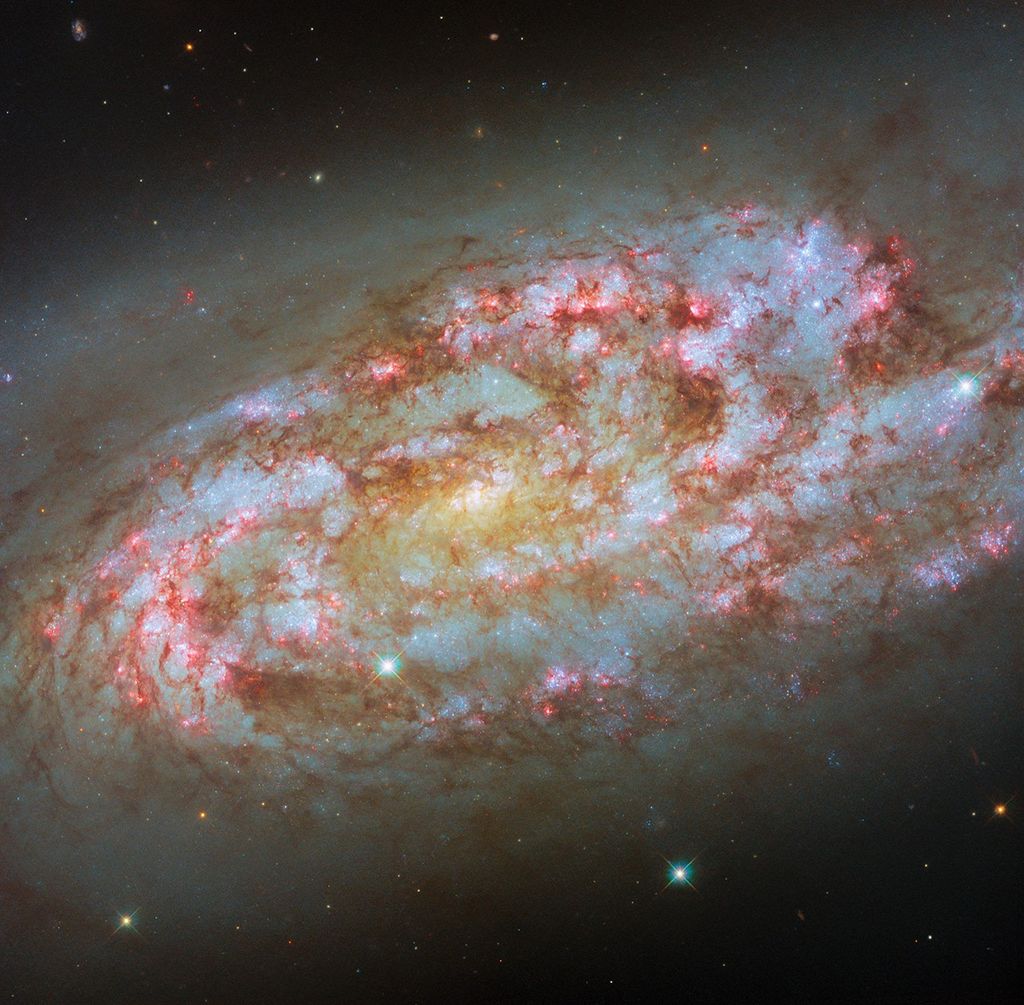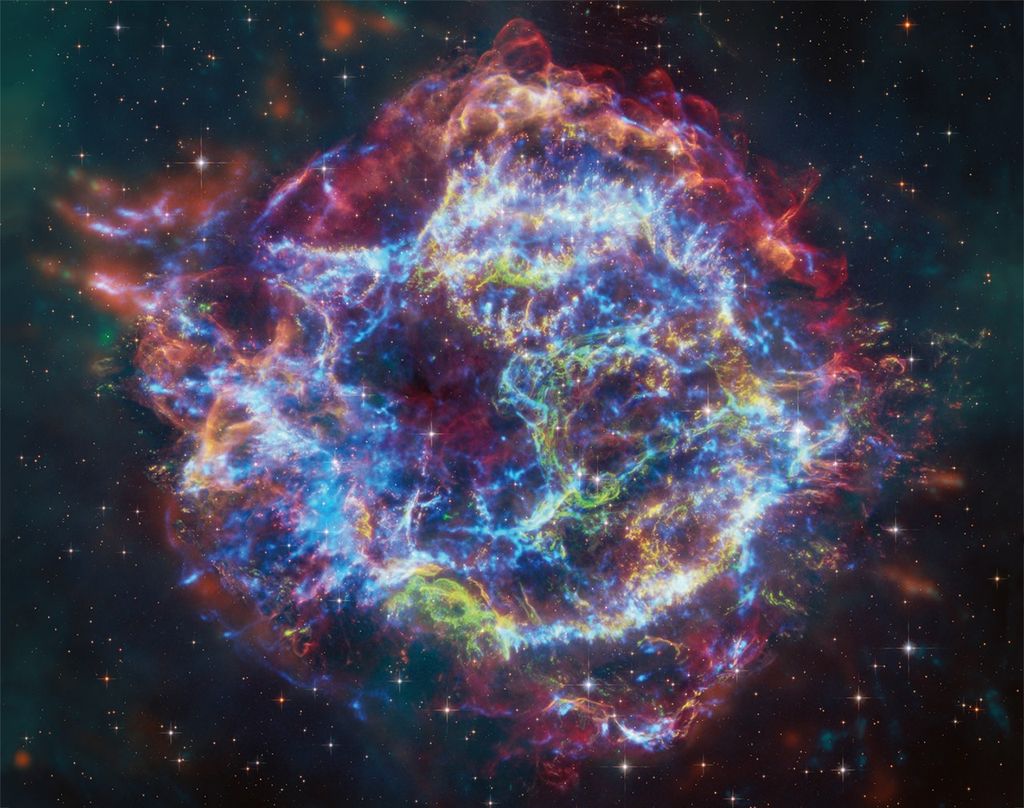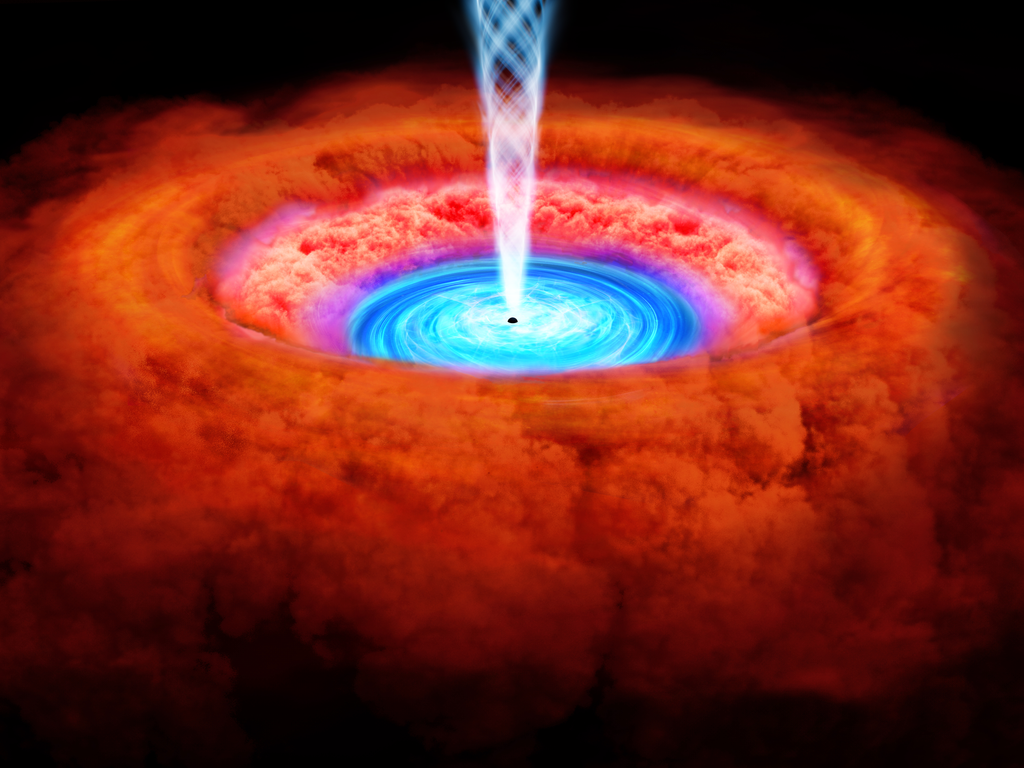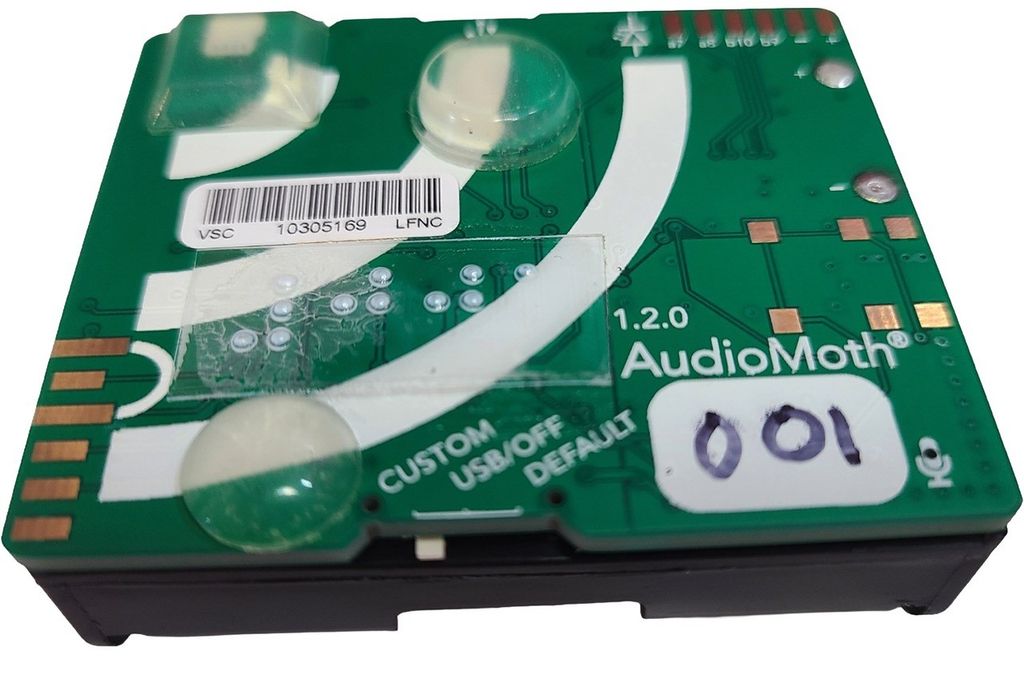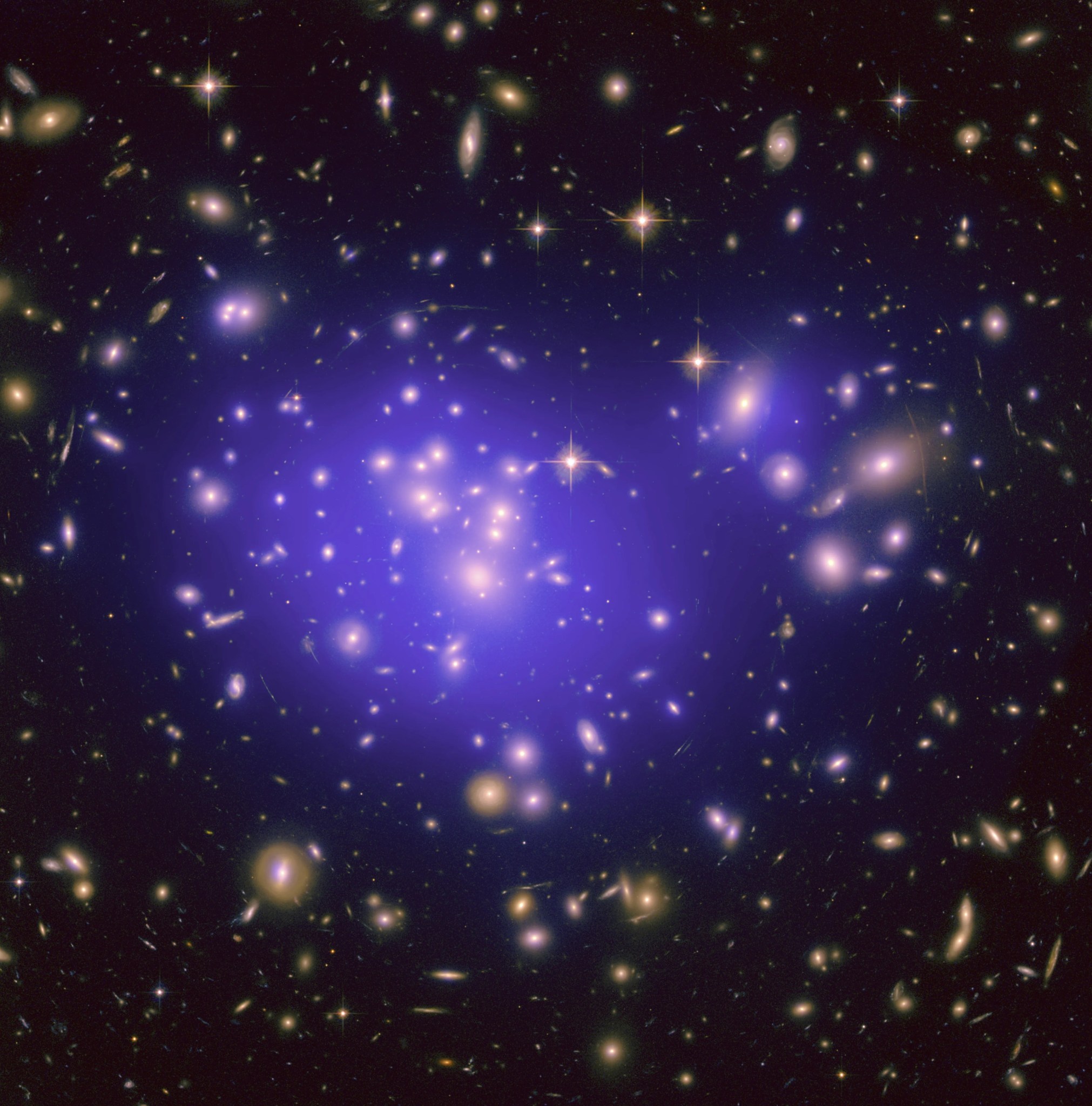Most of the universe is made of stuff we have never seen. Its gravity drives normal matter (gas and dust) to collect and build up into stars, galaxies, and massive galaxy clusters. Visible matter reveals itself by shining brightly, but astronomers detect dark matter by its gravitational influence on the light we see. By looking at the area around massive galaxy clusters, astronomers can identify warped background galaxies gravitationally lensed by the cluster and reverse-engineer their distortions. Mathematical models of these results shed light on the location and properties of the densest concentrations of matter in the cluster, both visible (normal matter) and invisible (dark matter, indicated by the bluish-purple glow).
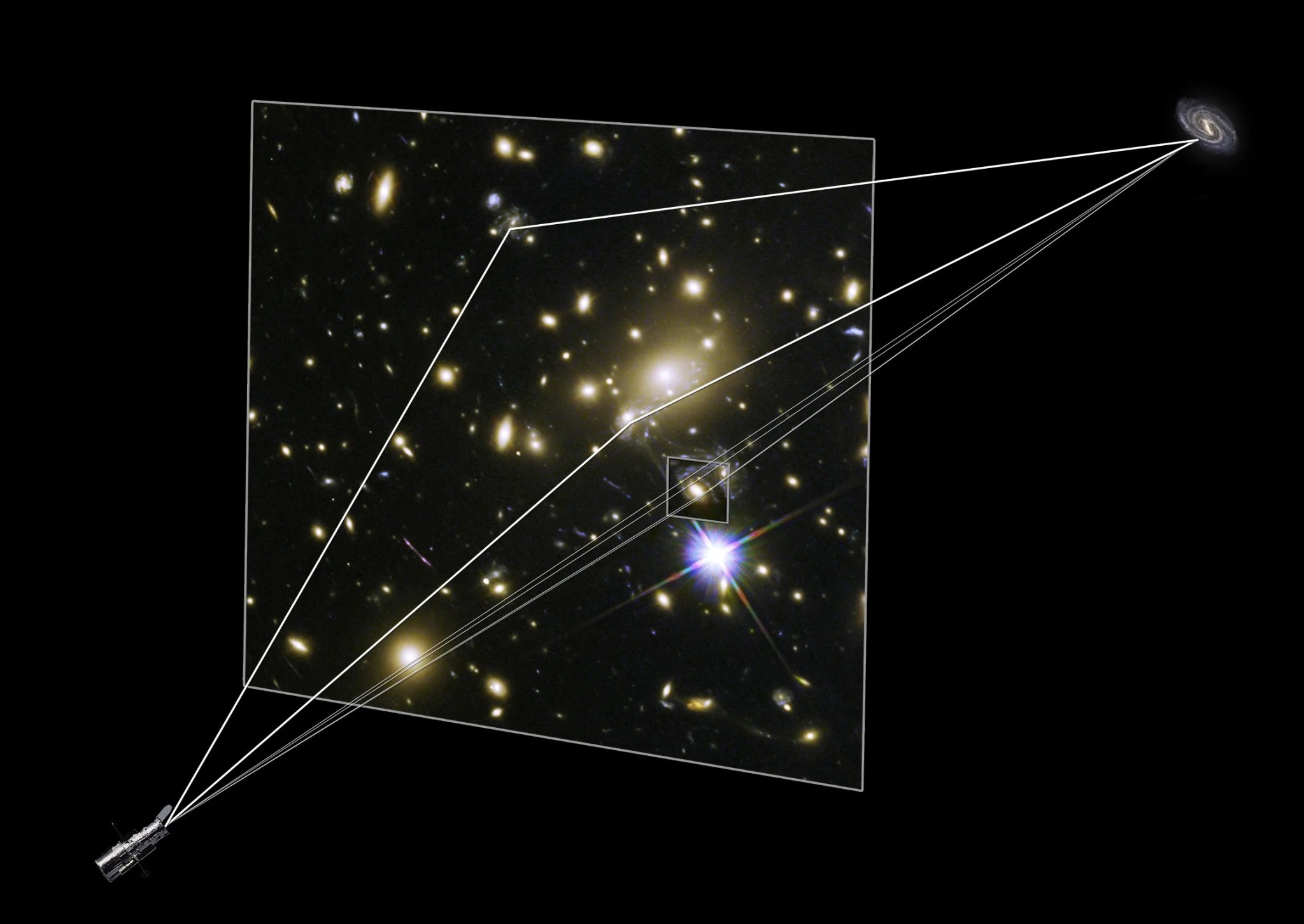
-
Galaxy Cluster Cl 0024+17 (ZwCl 0024+1652)
The massive galaxy cluster Cl 0024+17 (ZwCl 0024+1652) reveals the bent and amplified light of gravitationally lensed, distant galaxies. The left view is in visible light with odd-looking blue arcs among the yellowish galaxies. These are the magnified and distorted images of galaxies located far behind the cluster. The right image holds added blue shading that indicates the location of invisible dark matter. The shape and position of the gravitationally lensed galaxies we see in the left-hand image mathematically requires the presence of this dark matter.
Astronomers Find Ring of Dark Matter With Hubble Space Telescope
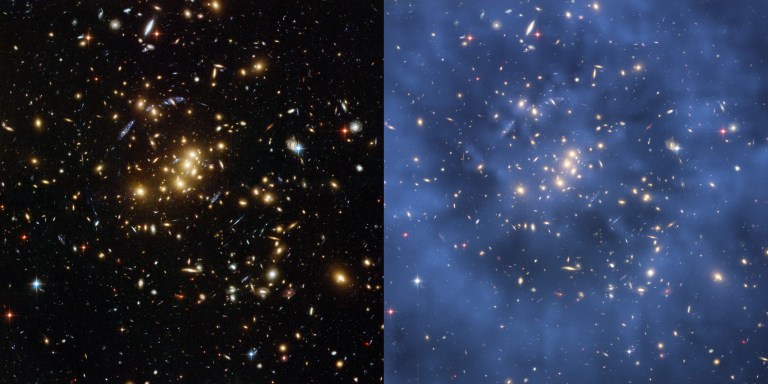 Two views from Hubble of the massive galaxy cluster Cl 0024+17 (ZwCl 0024+1652).NASA, ESA, M.J. Jee and H. Ford (Johns Hopkins University)
Two views from Hubble of the massive galaxy cluster Cl 0024+17 (ZwCl 0024+1652).NASA, ESA, M.J. Jee and H. Ford (Johns Hopkins University) -
Abell 1689
Astronomers using Hubble were able to take advantage of the giant magnifying lens created by the enormous galaxy cluster Abell 1689's gravity to not only map the cluster's dark matter, but also probe the nature of dark energy. Their calculations, when combined with data from other methods, significantly increased the accuracy of dark energy measurements. Scientists aren’t clear about what dark energy is, but they do know that it makes up a majority of the universe.
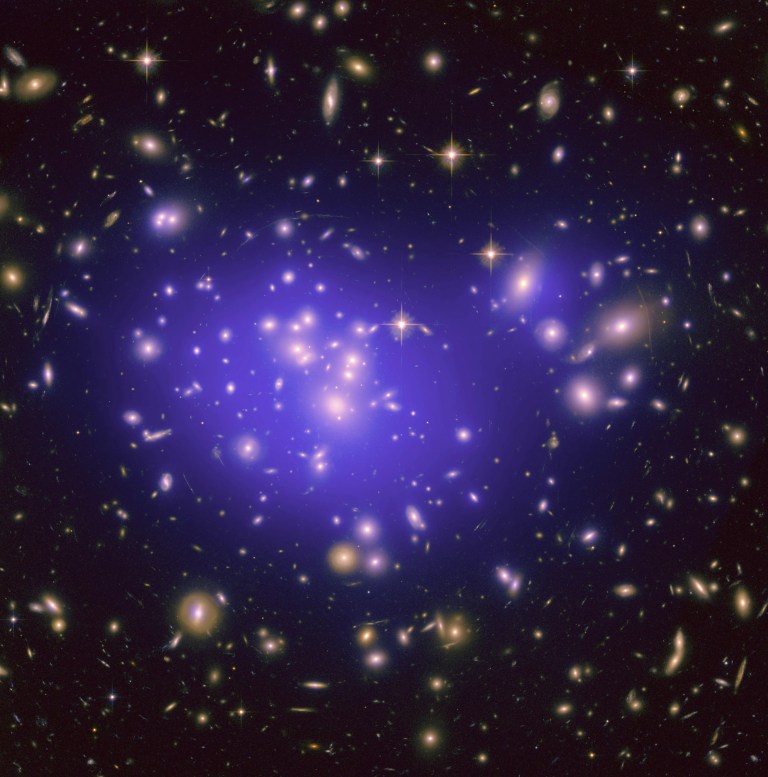 Abell 1689 is an immense cluster of galaxies located 2.2 billion light-years away. Astronomers map the cluster's dark matter by plotting the arcs produced by light from background galaxies that are warped by the foreground cluster's gravitational field.NASA, ESA, E. Jullo (Jet Propulsion Laboratory), P. Natarajan (Yale University), and J.-P. Kneib (Laboratoire d'Astrophysique de Marseille, CNRS, France); Acknowledgment: H. Ford and N. Benetiz (Johns Hopkins University), and T. Broadhurst (Tel Aviv University)
Abell 1689 is an immense cluster of galaxies located 2.2 billion light-years away. Astronomers map the cluster's dark matter by plotting the arcs produced by light from background galaxies that are warped by the foreground cluster's gravitational field.NASA, ESA, E. Jullo (Jet Propulsion Laboratory), P. Natarajan (Yale University), and J.-P. Kneib (Laboratoire d'Astrophysique de Marseille, CNRS, France); Acknowledgment: H. Ford and N. Benetiz (Johns Hopkins University), and T. Broadhurst (Tel Aviv University)
NASA's Goddard Space Flight Center; Lead Producer: Paul Morris
Hubble Focus: Dark Universe
Hubble Focus is a series of e-books that dive deeper into specific topics in astronomy that have been forever changed by Hubble’s explorations. "Hubble Focus: Dark Universe" is the fifth book in the series, highlighting the mission’s recent discoveries about dark matter and dark energy.
Read More and Download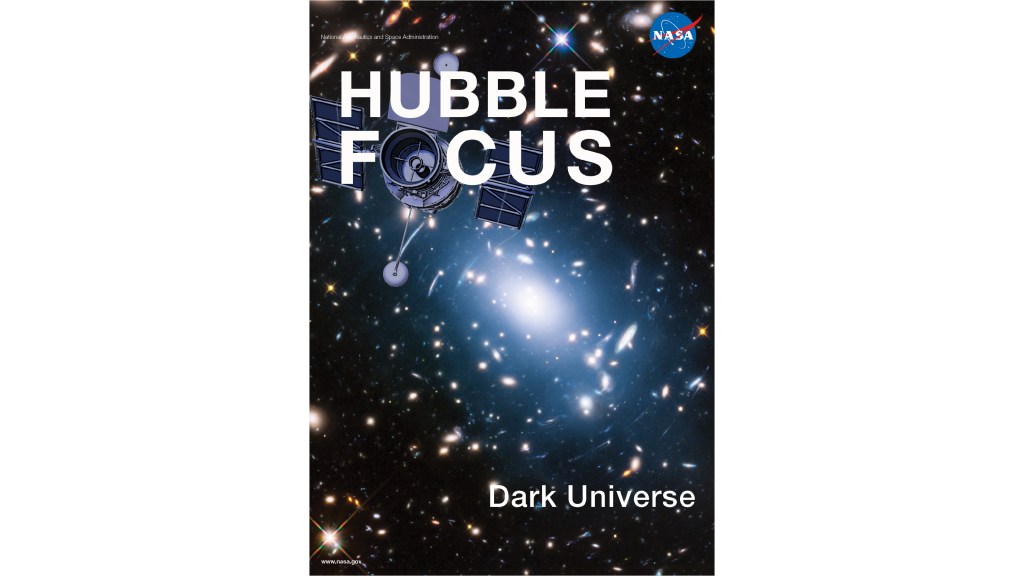
Learn More

Hubble Detects Smallest Known Dark Matter Clumps
Using NASA's Hubble Space Telescope and a new observing technique, astronomers have found that dark matter forms much smaller clumps than previously known. This result confirms one of the fundamental predictions of the widely accepted "cold dark matter" theory.
Hubble Science Highlights
Discover the breadth and depth of Hubble's exciting discoveries!
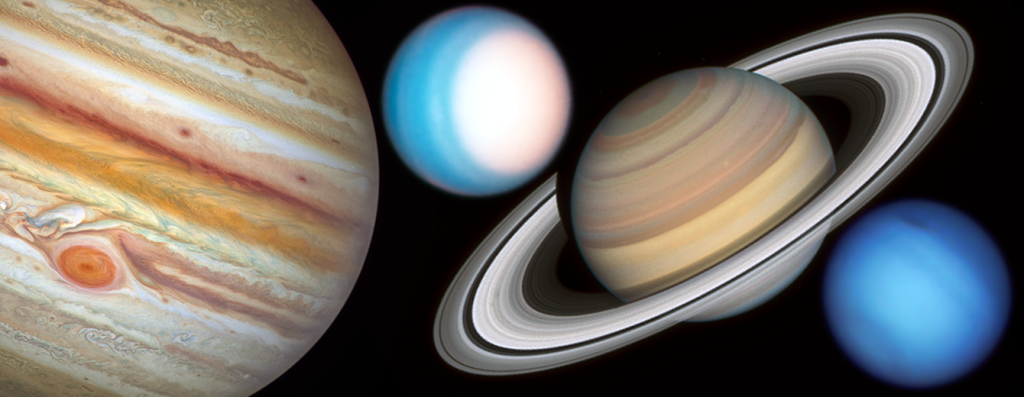
Studying the Planets and Moons
Hubble’s systematic observations chart the ever-changing environments of our solar system's planets and their moons.
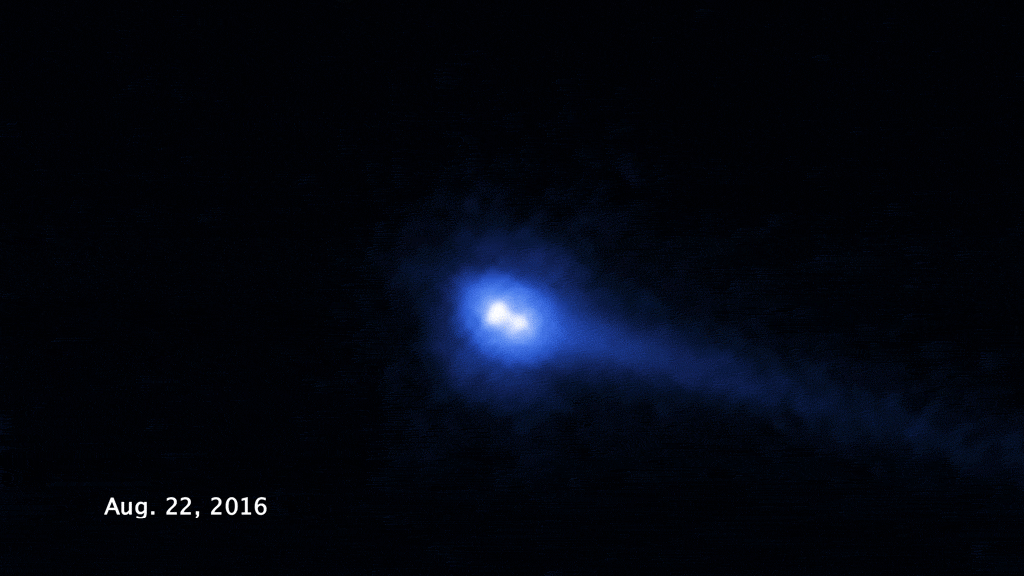
Tracking Evolution in the Asteroid Belt
These conglomerates of rock and ice may hold clues to the early solar system.
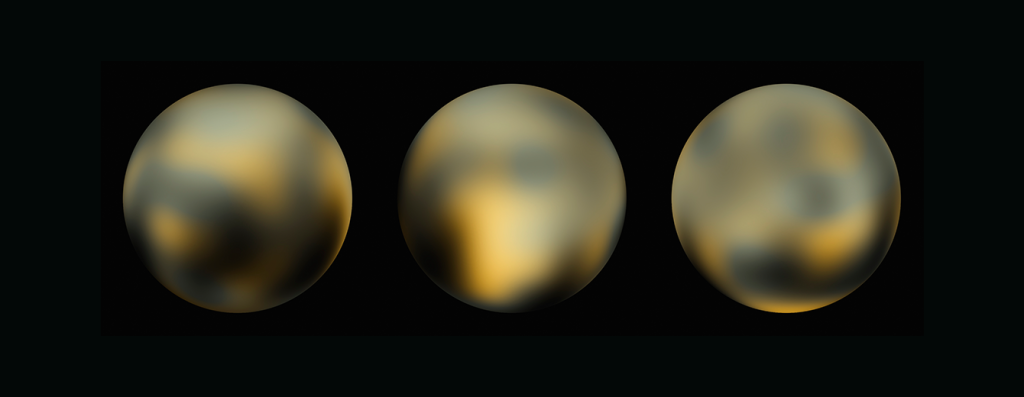
Uncovering Icy Objects in the Kuiper Belt
Hubble’s discoveries helped NASA plan the New Horizon spacecraft’s flyby of Pluto and beyond.
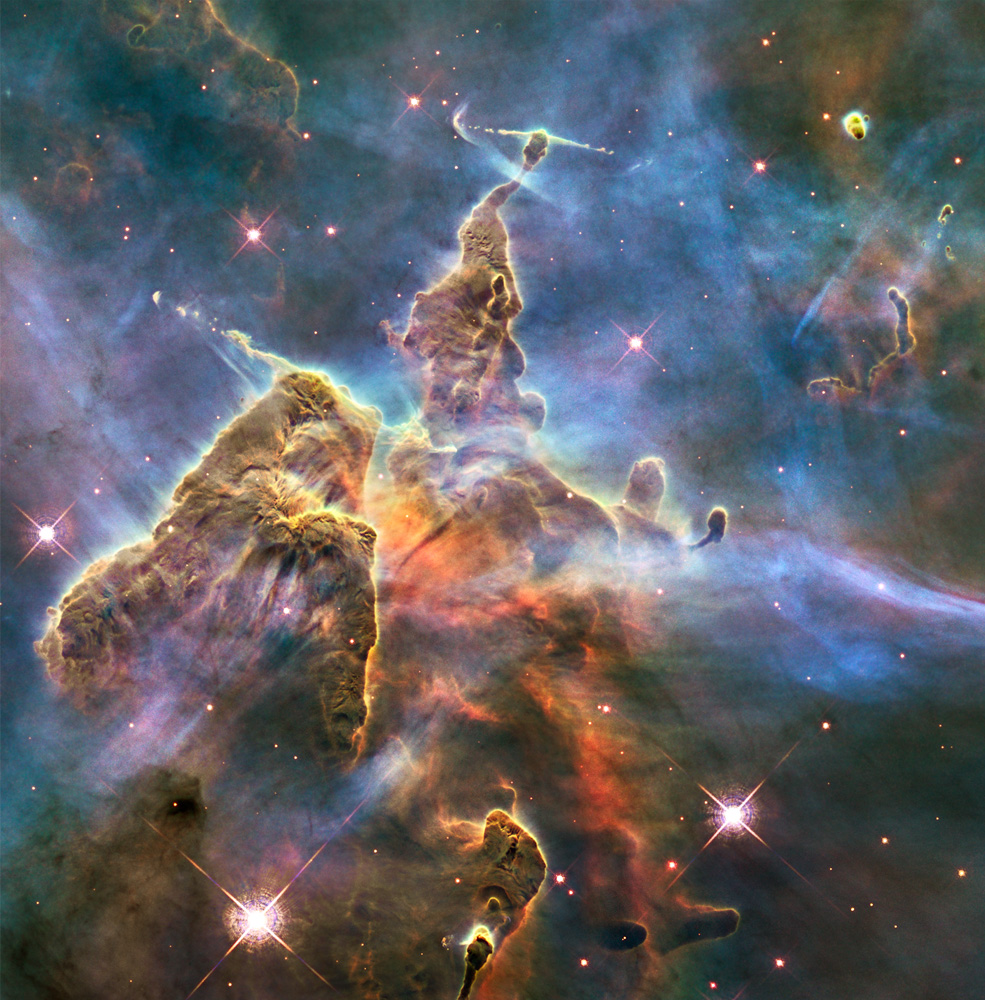
Exploring the Birth of Stars
Seeing ultraviolet, visible, and near-infrared light helps Hubble uncover the mysteries of star formation.
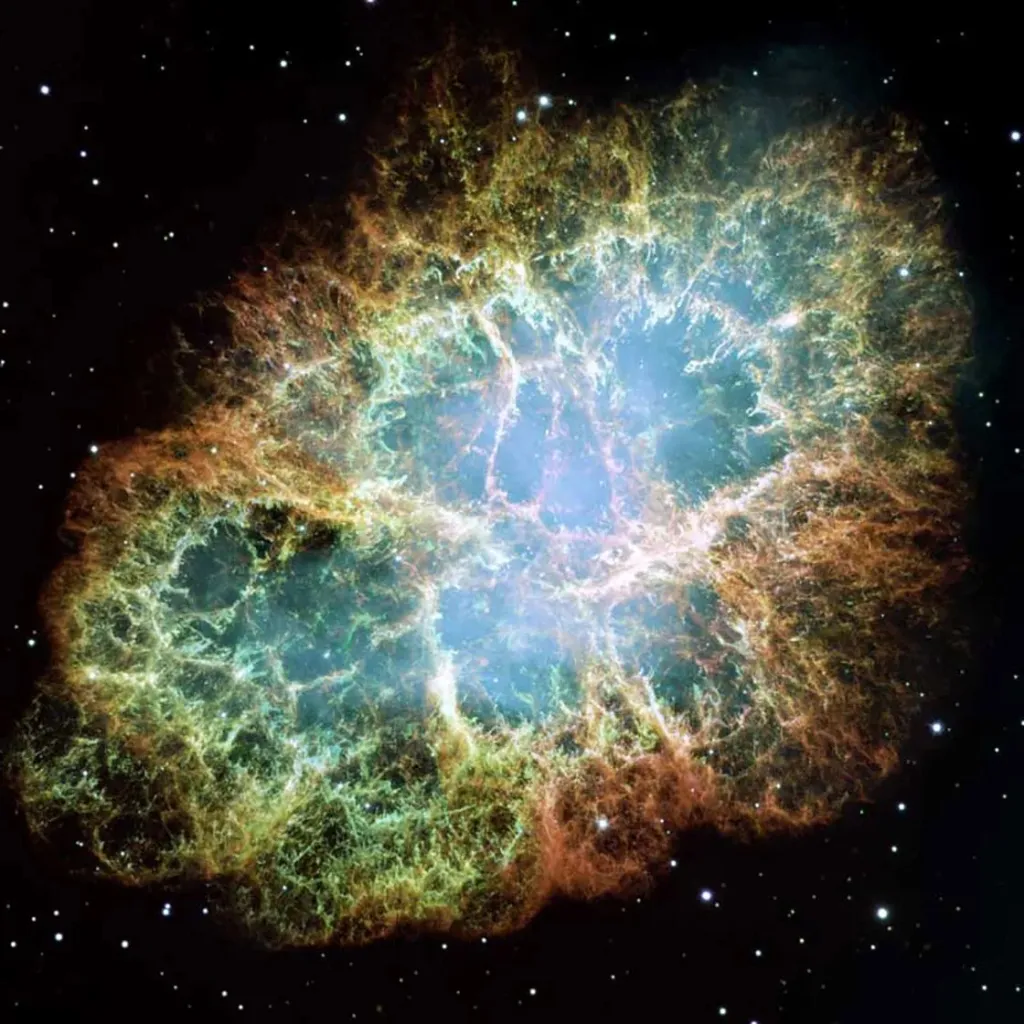
The Death Throes of Stars
When stars die, they throw off their outer layers, creating the clouds that birth new stars.
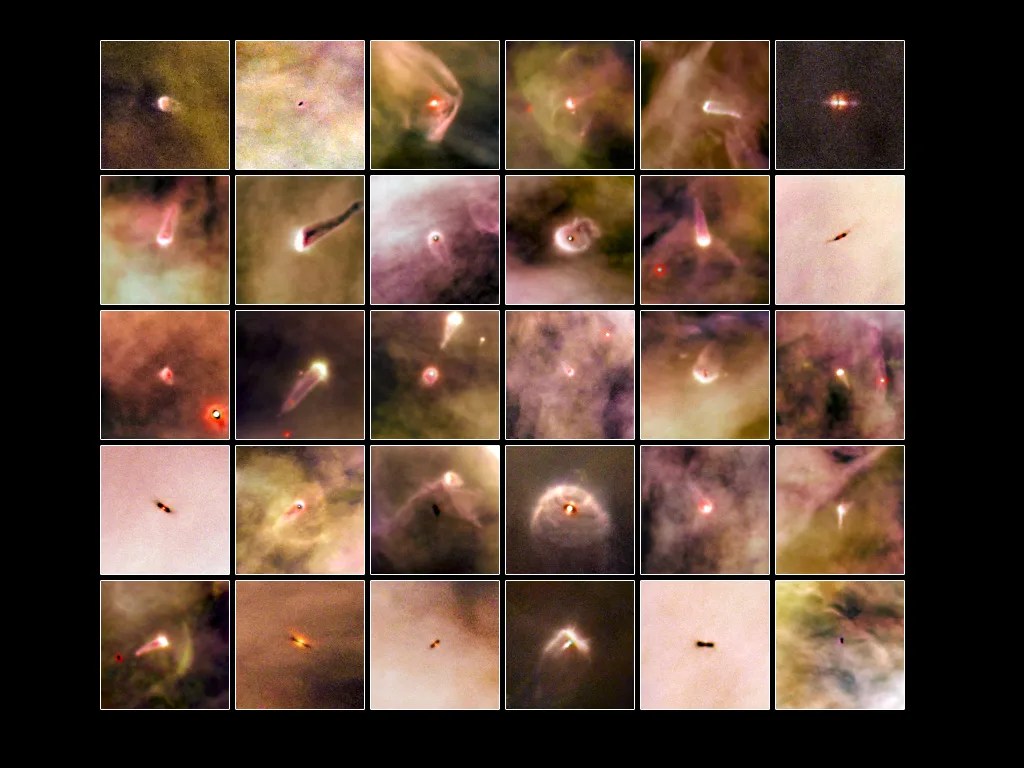
Finding Planetary Construction Zones
Hubble’s sensitivity uncovers the seeds of planets in enormous disks of gas and dust around stars.
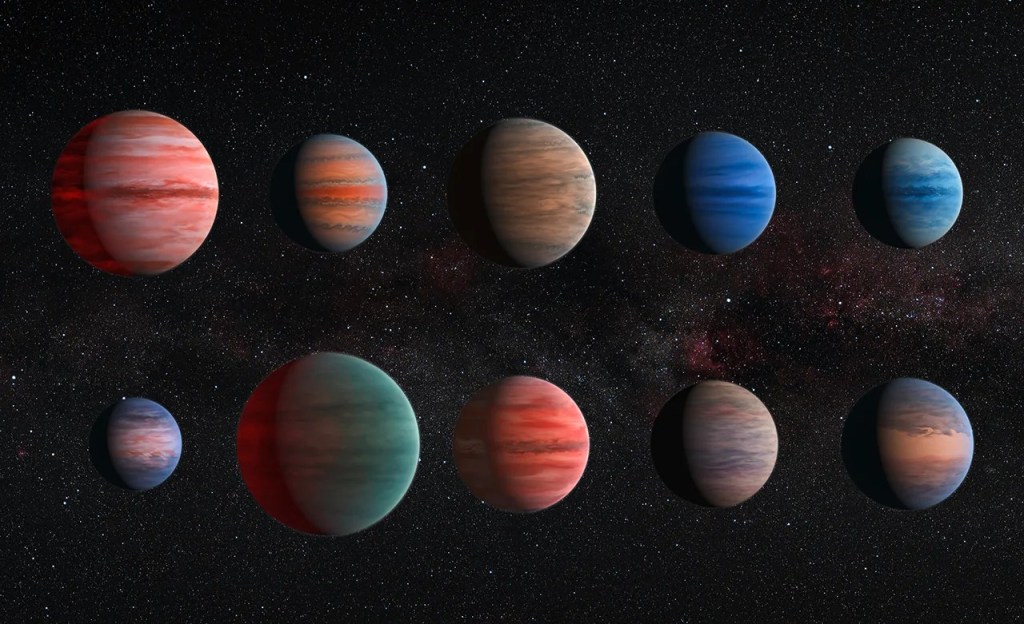
Recognizing Worlds Beyond Our Sun
Hubble can detect and measure the basic organic components for life on planets orbiting other stars.
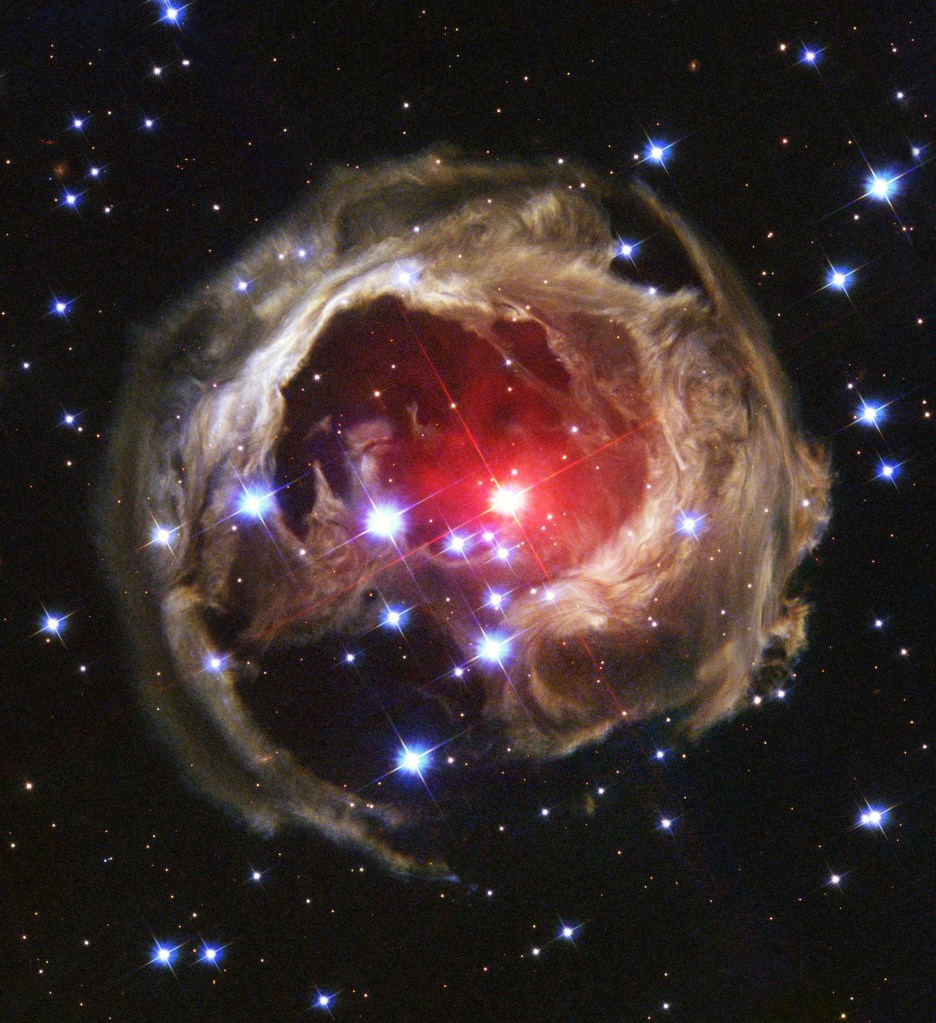
Seeing Light Echoes
Like ripples on a pond, pulses of light reverberate through cosmic clouds forming echoes of light.
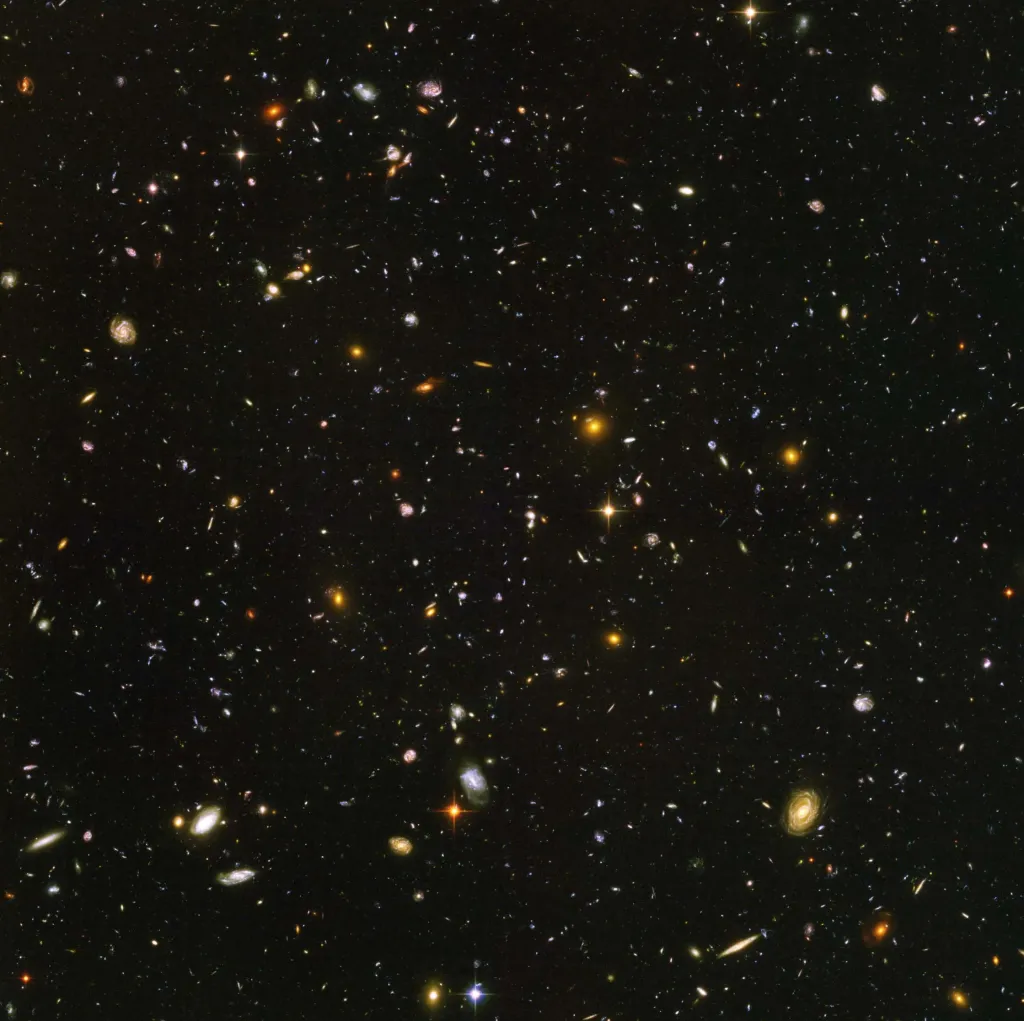
Tracing the Growth of Galaxies
Hubble's Deep Field observations are instrumental in tracing the growth of galaxies.
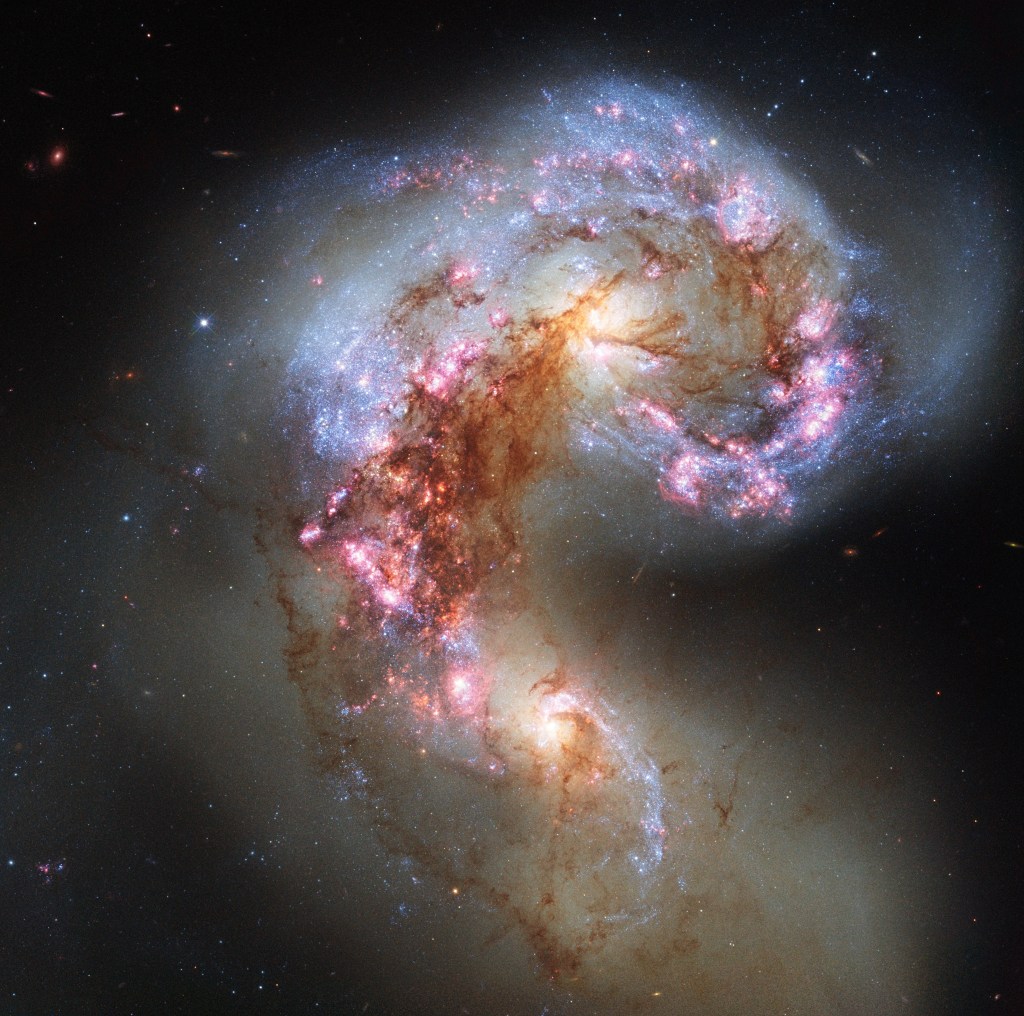
Galaxy Details and Mergers
Galaxies evolve through gravitational interaction with their neighbors, creating a menagerie of forms.
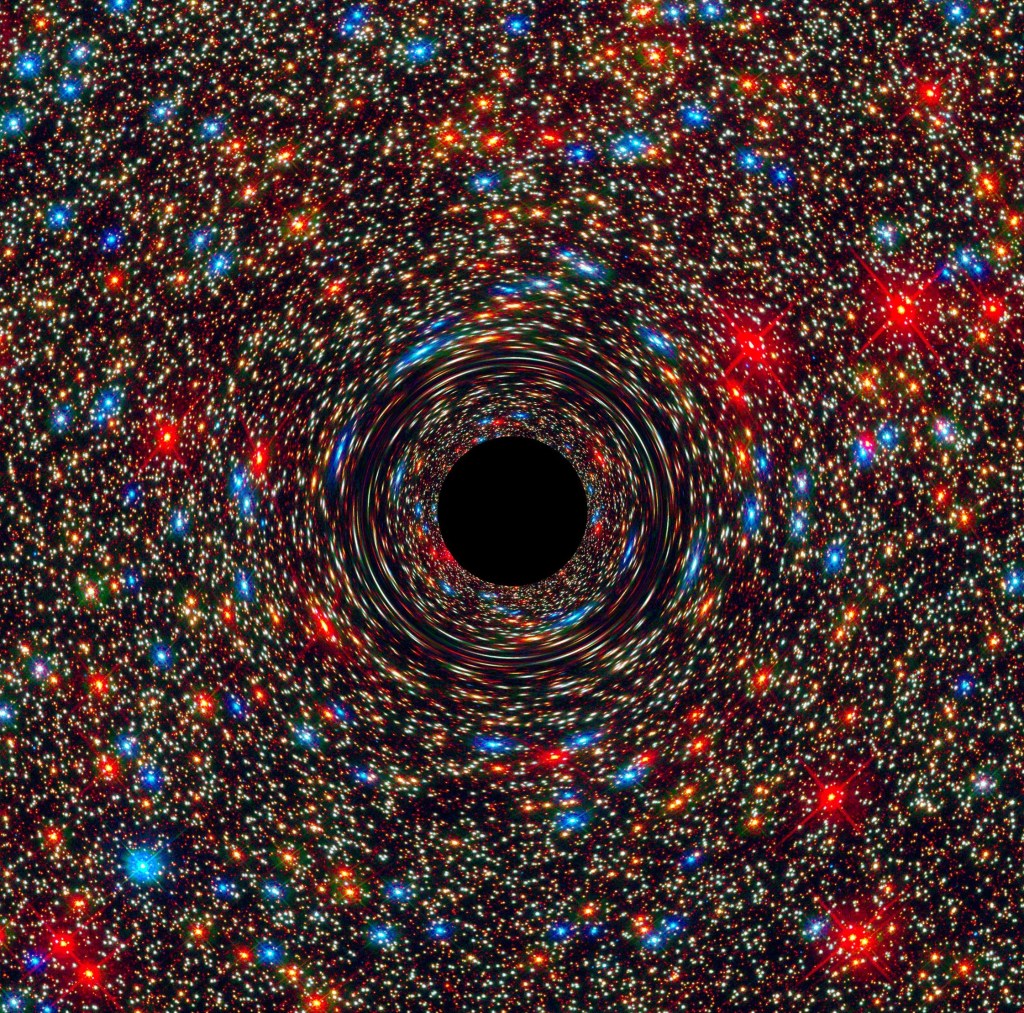
Monster Black Holes are Everywhere
Supermassive black holes lie at the heart of nearly every galaxy.
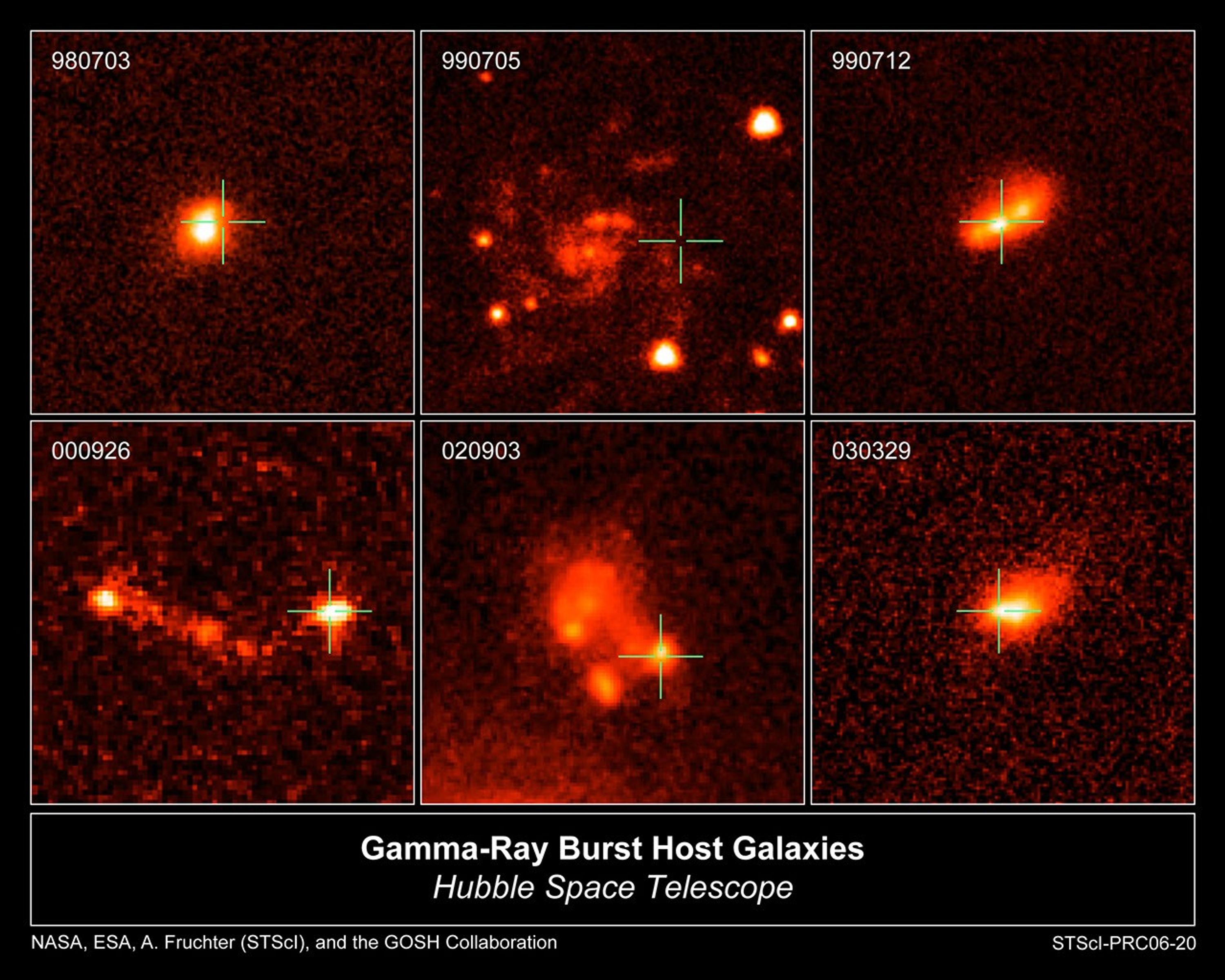
Homing in on Cosmic Explosions
Hubble helps astronomers better understand and define some of the largest explosions in the universe.
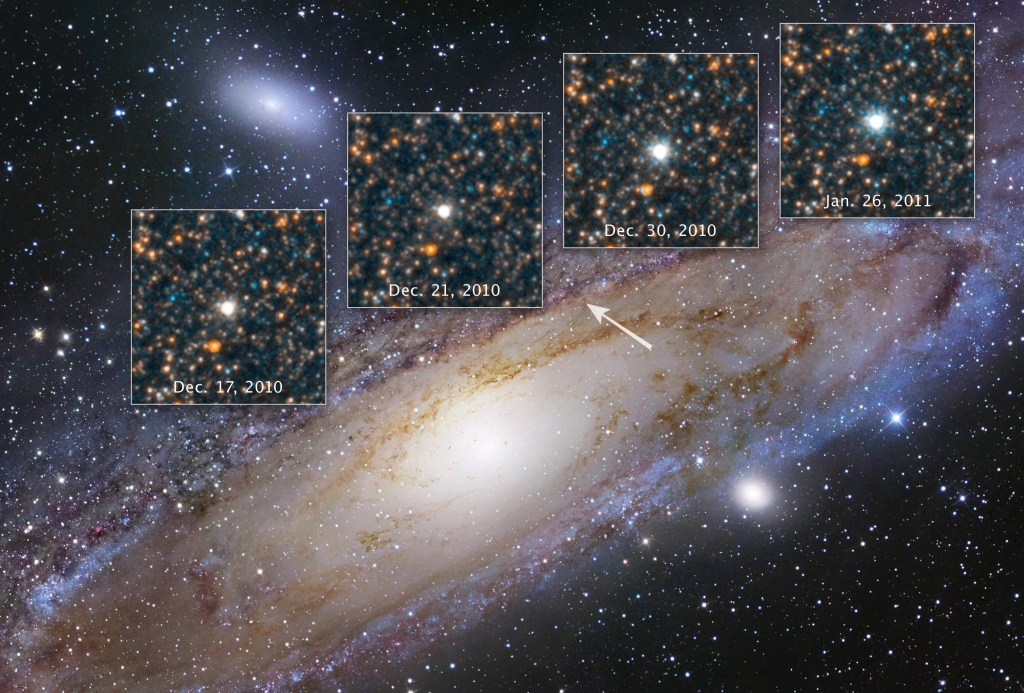
Discovering the Runaway Universe
Our cosmos is growing, and that expansion rate is accelerating.
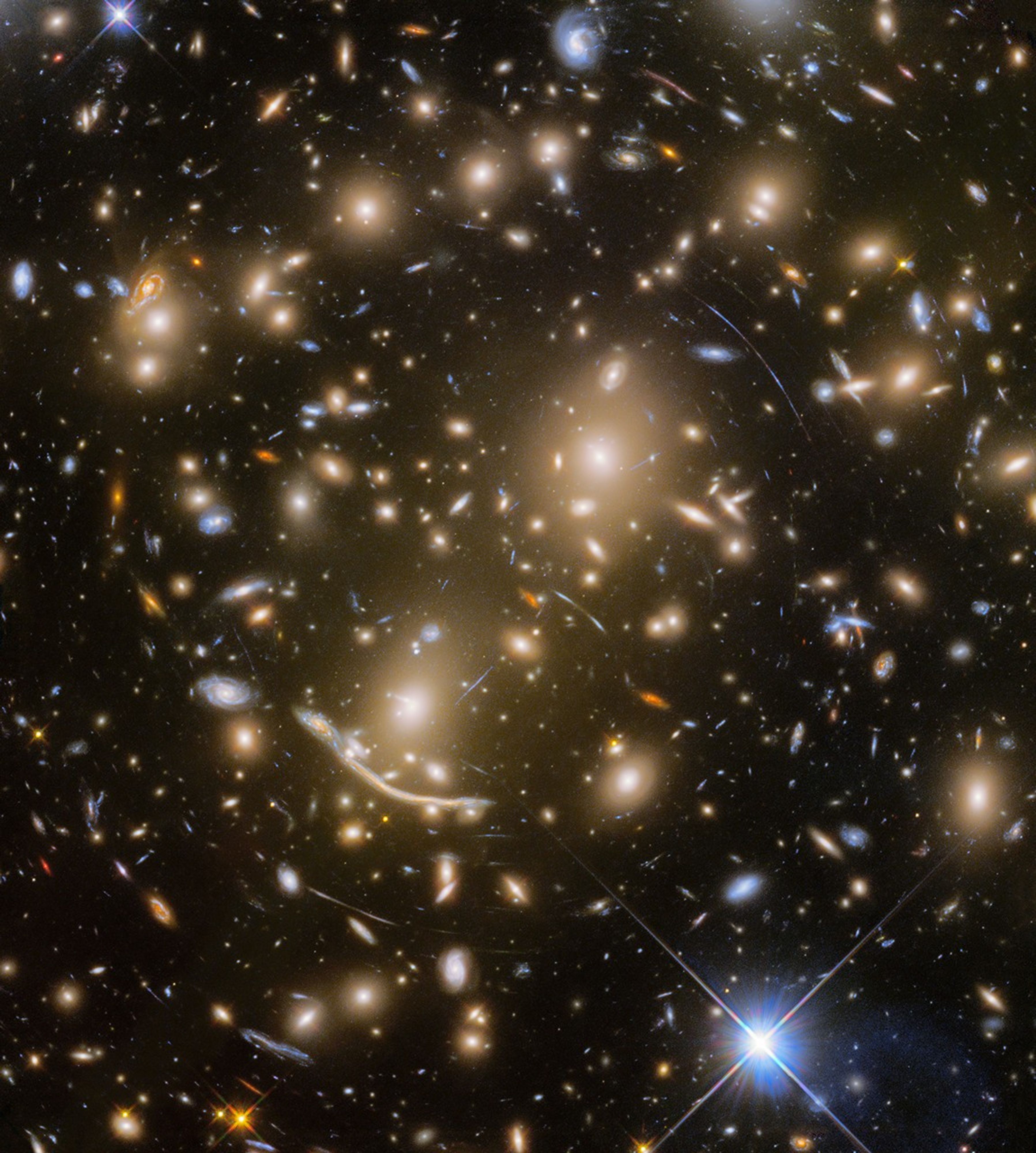
Focusing in on Gravitational Lenses
Gravitational lenses are 'Nature's Boost', expanding our view deeper into space and farther back in time.

Mapping the Cosmic Web
Filaments and sheets of matter create an interconnected web that forms the large-scale structure of the universe.




